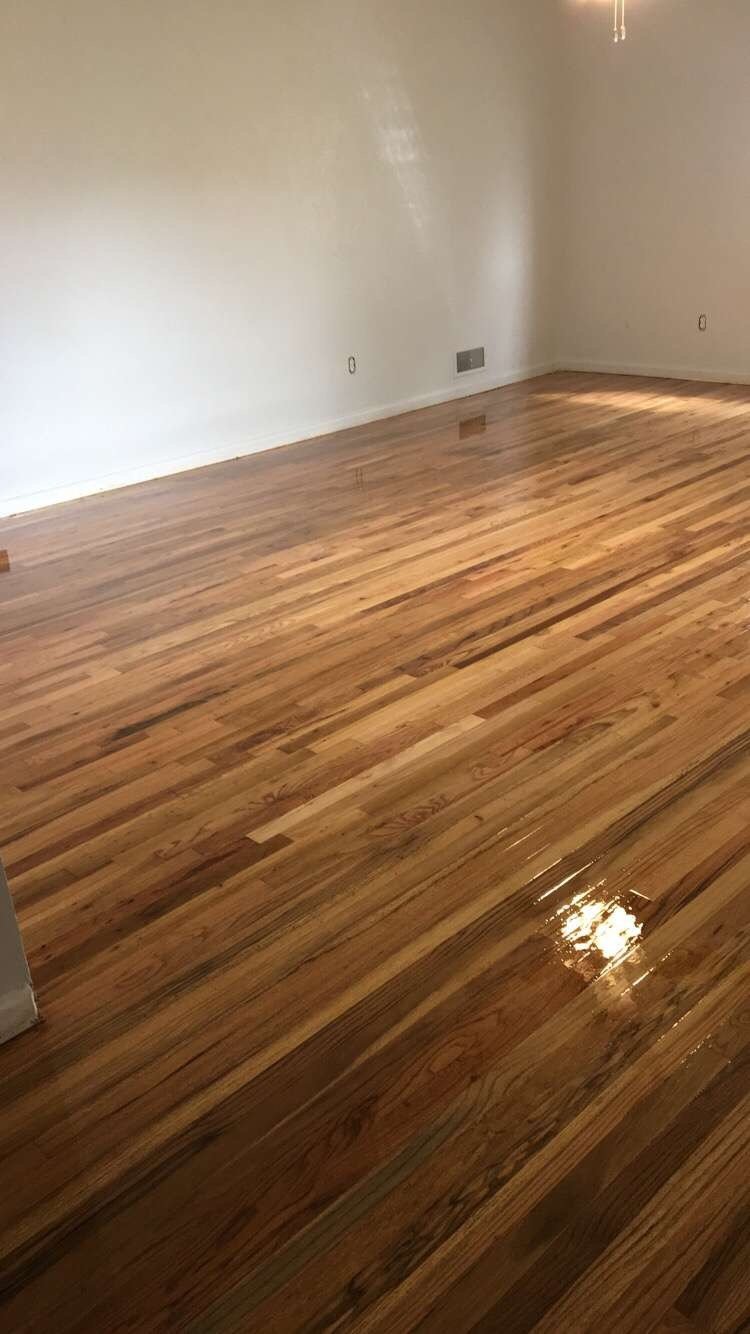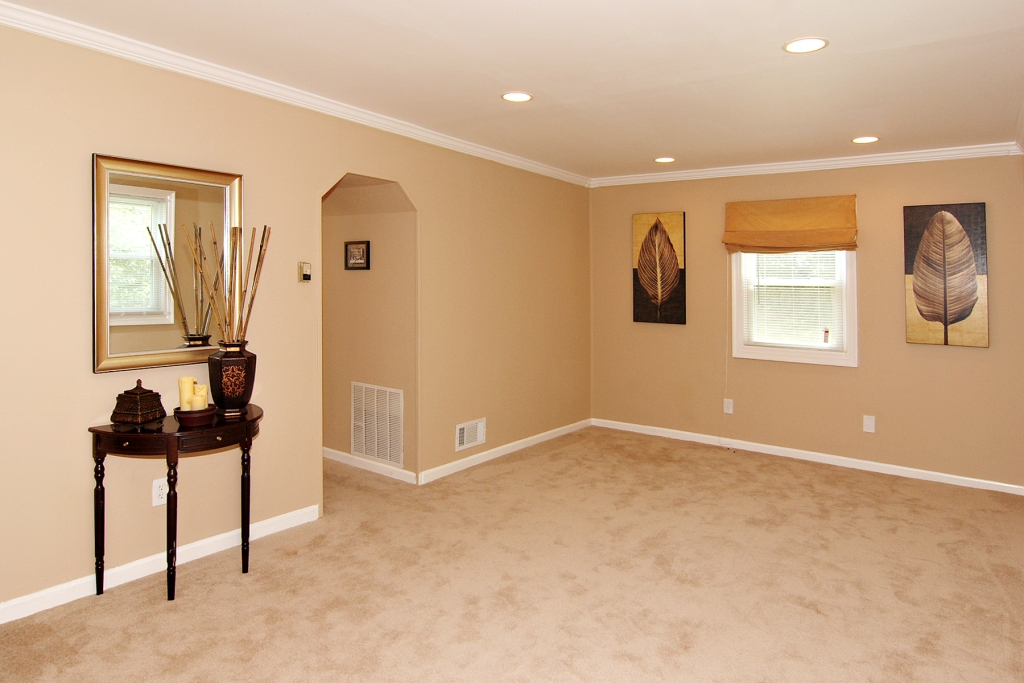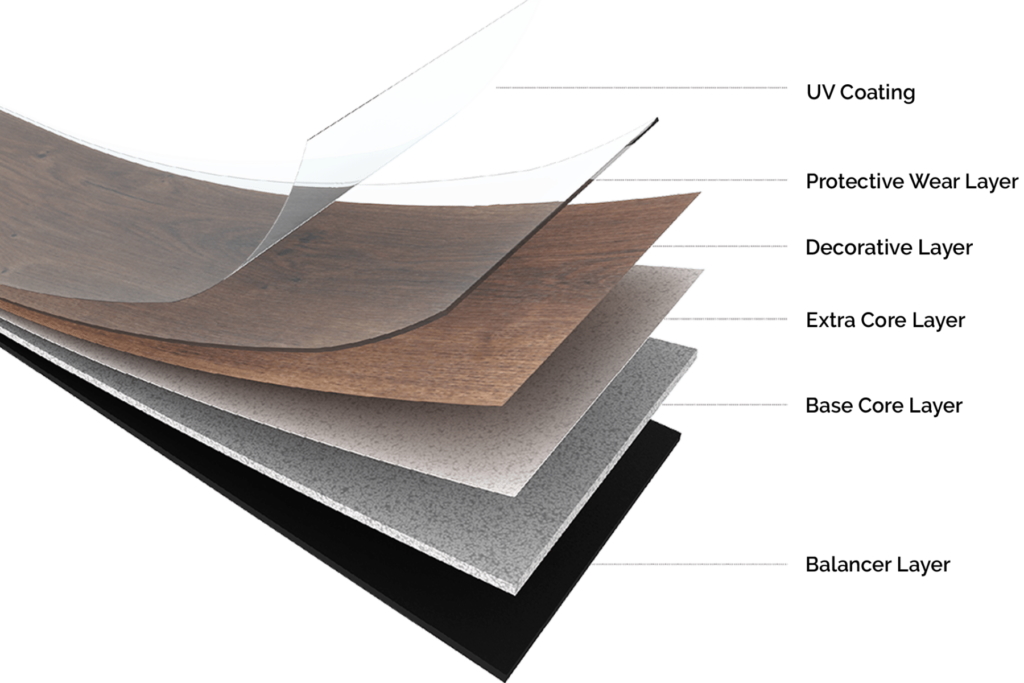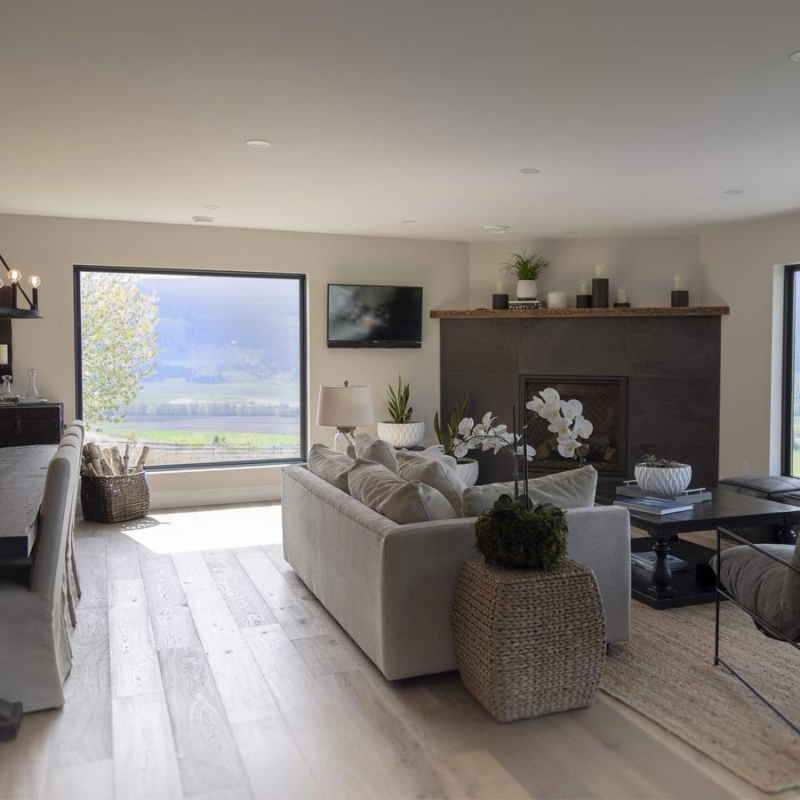Do you have a rental property that’s in need of new flooring surfaces?
Because we’re in the property management industry, frequently we’re asked what the best replacement flooring surface is. Our maintenance and renovation people like a product called Luxury Vinyl Flooring (LVF) but there are other options like solid hardwood, carpet, tile and sheet vinyl.
We want to show you the advantages and disadvantages of each type of flooring. Hopefully after reading this you’ll find it easier to choose a flooring surface that adds value to your investment property and attracts quality, long term renters.
When replacing flooring you’re caught between a rock and a hard spot. If you invest in a high end surface like hardwood and ceramic tile you might spend too much and never get your money out of it.
You also risk losing a reliable tenant that passes your property over and keeps looking for something that’s more appealing if you spend too little. In addition there is the issue of resale. If you invest in a really high end flooring surface like solid hardwood it adds to the perceived value of the property when you sell.
Professionally installed and finished solid hardwood floors (as opposed to engineered hardwood) are multigenerational floors and they scream quality to a potential tenant or buyer.
The installation and materials costs of hardwood are higher than other materials. A low ballpark cost for installation of hardwood flooring is $4.00 in labor plus $3.80 for materials totaling $7.80 per square foot from a big box building supply store. Just for arguments sake, a 1000 square foot rental with a 40 square foot bath subtracted would require 960 square feet of hardwood. That works out to $7488. After that, 40 square feet of tile would still have to be installed in the bath at a rough cost of $1250 the total would be $8738. Spread across 10 years that would be $72 a month. Will you own that rental long enough and be able to charge enough to get a good return on that floor? It depends on the crowd you’re renting to and if you’re investing for the best resale.

If you want a true lifetime or multigenerational hardwood floor the cost is higher than what you will find at a big box store. Cody at Bell Hardwood Floors in Idaho Falls stated that the cost per square is more like $10.10 a square foot. The ballpark cost of the materials is $2.50 per square foot for a readily available species like oak. The installation will be about $3.80 per square foot. The kicker is the additional cost of finishing. That will add another $3.80 per square foot. So the price of hardwood in our theoretical rental would be $9696 and that would work out to $80.80 a month over ten years.
Although hardwood is a lifetime surface it does require maintenance. According to Cody, the floor should be resealed about every 5 years. This means maintaining the floor before it turns into raw wood. The cost for that maintenance is between 75 cents and one dollar a square foot. So, using 960 square feet again would be somewhere between $720 and $960 to refinish. On a ten year schedule that would be an additional $6.00 to $8.00 a month each time it was refinished.
After looking at hardwood, carpet has to be the answer for people running a business and not a charity.
Carpet has lower up front costs. It’s one to four dollars a square foot for the carpet itself and the pad is going to run between sixty cents and a dollar a square foot. Use that 1000 square foot rental again. In this example you’ll have to subtract the kitchen and the bathroom. So, using the 40 square foot bathroom again and a kitchen that’s 10% of the overall square footage and you’re at 140 square feet that need a waterproof surface like vinyl. The square footage that has to be covered with carpet is 860 square feet. The minimum cost of carpet alone will be $1.51 a square foot with a pad. that works out to $1298.60. The cost of the vinyl in the bathrooms with labor at $3.61 per square foot would be $505.40. Each installation is different but let’s go a little over middle of the road with $2.50 a square foot labor. That gives you a labor cost of $2150.00 The total cost of a new installation would be $3904.00. That’s easier to absorb but nothing worth having is cheap.

When carpet is new it looks good, it’s great to walk on and it makes a room smell new. The problem is carpet can’t always be new. It’s going to hold water, dirt and smells. In Idaho, give carpet a couple of full snowy winters and summers of sand storms and it won’t be new anymore. A few years of food smells and maybe an emotional support animal won’t help either. The expected life of carpet in a rental of five years can be extended if it’s extremely well vacuumed and shampooed on a regular basis. Is it a reasonable expectation that carpet in a rental will be well maintained by every tenant for 5 plus years?
Because people and situations are never perfect, you’ll end up paying for a carpet cleaning every time a tenant moves out. That will run you about $135.00 a pop. Say you have a tenant swap every year that’s $1350.00 for carpet cleanings in a ten year period.
The end game is that at the end of five years you can expect to replace that carpet again. So, in a ten year period you can expect to spend over $6896.00 on just the carpet. Add onto that $1350.00 for cleanings and your total is $8246.00. That comes out to $68.71 a month for 10 years. That’s a bit spendy for a surface that will always look, well, less than perfect.
Hardwood is expensive and carpet isn’t free and it’s overall performance isn’t ideal. That leaves LVF.
What is (Luxury Vinyl Flooring) LVF? LVF is also called LVT or Luxury Vinyl Tile by some. The product that we typically install is made up of six layers as shown in the illustration below.

What allows it to mimic so many different flooring materials accurately is that it has a layer in it that’s an image of the product it’s imitating. It’s also embossed with the texture of the material it’s imitating.
What makes it so tough is that on top of the image layer is a protective wear layer made of polyurethane which can be reinforced with ceramic bead, silica bead or aluminum oxide. There is also a UV coating to protect it from sunlight exposure.
Unlike hardwood and laminate flooring, LVF isn’t water resistant, it’s waterproof. That means you can use it in bathrooms and kitchens.
Luxury Vinyl Flooring (LVF) is durable, and requires only normal cleaning. The best part is that unlike most really durable products it looks great. It can imitate many patterns and colors of ceramic tile and it also has the grain and color of many desirable wood floor surfaces. It keeps on looking great too. Is LVF an exact replacement for hardwood and tile in appearance, no. However it’s more durable than hardwood with out the maintenance costs. The product that we install carries a commercial warranty of 25 years.

Using the 1000 square foot example again, the cost of materials and labor for LVF would be $7190.00 at $7.19 per square foot. That’s not cheap but there are advantages. LVF doesn’t have to be stripped and resealed on a regular basis. Individual pieces can be replaced if you use interlocking planks that don’t require adhesive. It’s expected to last more than 10 years so the monthly cost of LVF would be $59.91 a month for 10 years of ownership because you only pay for the initial installation.
The end game on all of this comes down to how long term one looks with their investment properties and how they want to position their properties.
This is how the numbers break down.

If what you are shooting for in tenants is the absolute highest end and you want the highest resale possible, hardwood and tile might make sense. However, they’re a tough sell when compared to LVF.
LVF has up front costs that are within $300 of carpet and vinyl. It has no maintenance costs and it’s very aesthetically pleasing. While not as soft as carpet it’s softer on the feet than hardwood if the floating version of LVF is installed. LVF has reached a quality level where Bell Hardwood Floors is installing two different lines of it and will be offering more in the future.
When carpet is new it’s a great surface, it’s warm, it’s quieter than other surfaces and it can be a good looking surface. However carpet doesn’t look as good as LVF when it’s not new, and it retains odors and stains. Carpet is also 12.8% more expensive overall than LVF which has none of the aesthetic or maintenance problems. Another thing to remember about carpet is that it doesn’t work well with pets and according to the LA Times 70% of renters have pets. That’s a large market to ignore.
We hope you’ve found some useful information here. Jacobgrant has been managing properties for over a decade. Please contact us with your concerns about flooring or any other concern you may have regarding your investment properties or properties you are considering. We’re newbie friendly.
